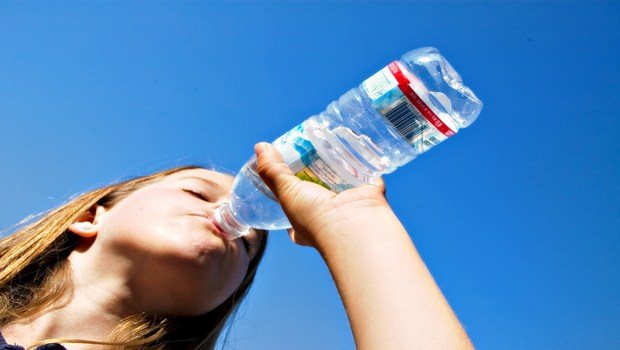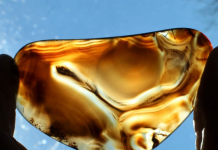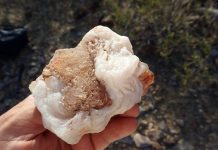
by Mark Nelson, EMT
(CFMS newsletter)
As rockhounds, many of our activities involve environmental conditions that are warm. Most workshops don’t have air conditioning and can heat up during the summer. The same goes for the halls in which we hold our shows. Field trips are most popular during months when it’s not cold, snowing or raining. Once the weather warms, we are off to the mountains, deserts, forests, streams and beaches in search of unique material.
As leaders of our clubs we have an obligation to be aware of the conditions that will enable our members to enjoy our hobby safely. A weak and tired person in a workshop will get hurt or damage equipment, and on a field trip they will trip and fall. Fatigue and an altered mental state put all of us at risk of injury, and one of the primary causes of this is dehydration!
Water regulates our body’s temperature, lubricates joints, and helps transport nutrients for energy and health. If we aren’t properly hydrated, we won’t be able to perform at an acceptable level and may become a hazard to ourselves and others. Two-thirds of the human body is made up of water, and the body of a person weighing 154 pounds contains about 1,500 ounces of water. Almost 70% of this water is inside the body’s cells, 20% is in the space surrounding cells, and slightly less than 10% is in the bloodstream.
The water in the human body is essential to keeping it healthy. We lose water constantly. Humidified air leaves our body when we breathe, we sweat to cool the body, and we eliminate water and waste by urinating or having a bowel movement. How many times at our shops and during field trips have we seen our members seek a seat on a chair or on a rock, or stay in the car to “sit this one out”? One of the first signs that the body needs water is a lack of energy. This is often followed by a reduced volume and darker yellow color of urine, a dry or sticky mouth, dry skin, a mild headache, and slight muscle cramps. Thirst is generally the last indicator that the body needs water!
How much water should you be drinking? There are no set guidelines for water intake because everyone is different. Sweat rate, heat, humidity, and activity intensity and duration are just some of the factors that must be considered. A simple way to make sure you’re staying properly hydrated is to check your urine. If your urine is consistently colorless or light yellow, you are most likely staying well hydrated. Dark-yellow or amber-colored urine is a sign of dehydration. When the amount of water you intake matches the water you excrete, the body’s water supply will be balanced. A healthy person of about 150 pounds who is not sweating excessively should drink at least 65 ounces a day. In a hot workshop or during vigorous collecting activity, it is recommended to increase this to 100 ounces.
As a rule of thumb I advise field trip members to drink one 16-ounce bottle for every hour of a field trip. A convenient way to carry water is in a 2-liter hydration bladder. These are available at a cost of $8 to $26 and come with an attached drinking tube that can be slipped into your backpack. Platypus, CamelBak, and Outdoor Products are some of the brands that are conveniently available at places like Dick’s and Big Five sporting goods, REI and Walmart. Other models are their own backpack or waist pack. As we enter into the warmer months we need to preach the most basic of safety rules: drink water!












